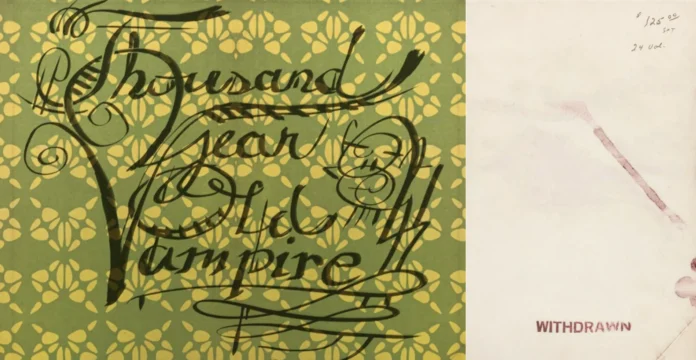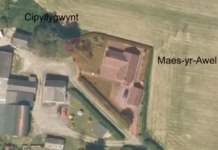As a way of marking the always auspicious occasion of All Hallows’ Eve, I thought I’d once again talk about a horror adjacent roleplaying game that does a great job accomplishing what it sets out to do as a recommendation for Halloween, but in a change of pace to the regular, this is nominally a solo roleplaying game.
Thousand Year Old Vampire is a 186 page game of personal horror and melodrama by Tim Hutchings, released in 2019 (appropriately enough, given the world event that soon followed, isolating so many of us), where you take the role of the titular immortal and live out their long, sad, violent existence.
I personally find solo roleplaying games can be very hit and miss, with most of them following a structure not dissimilar to a choose your own adventure book, which can be fine when written well, but is an inherently limited structure. Thousand Year Old Vampire isn’t like that. Instead, it’s prompt based; there are 80 prompts you move your character through as they begin their existence is an immortal. 80 might not sound like much, but there are different events — a second and third –for landing on the same prompt repeatedly, plus there are additional prompts in one of the book’s Appendices, so it works out as being quite a lot in practice.
Of course, before beginning to move through this game proper, you need to make your character, by detailing various facts about them, starting with a simple, clear concept. As this is a game of an immortal suffering the ennui of great amounts of time passing, this will almost always be an historical figure. The book’s examples include a Mesopotamian midwife and a French Knight.
Your vampire is defined by five traits: Memories, Skills, Resources, Characters, and Marks. As this vampire moves through the prompts, these traits will be changed. A prompt creates an Experience — a single, evocative sentence describing what happens — for the immortal. A group of three similarly themed Experiences becomes a Memory, however, the undead may live for centuries or millennia, but they are still bound by the limitations of memory. A vampire can hold no more than five Memories at once, as they move through the ages. As they continue to accrue Experiences that outpace their Memory, they must commit some Memories to Diaries, or otherwise lose them. A Diary serves as a container of extra memories beyond the immediate five held in a vampire’s mind, and can hold up to four Memories in this way, which the vampire takes to be the objective truth. A vampire can maintain one Diary at a time, and these are physical records that can be lost, stolen, or destroyed.
Skills describe a vampire’s capabilities, the things they can do that they’re good at, and conceivably could be anything from Swordsmanship to Master of Tea Ceremonies. As with most ideas in this game, the intention is to be inclusive rather than prescriptivist. Skills are either checked or not; an unchecked skill can be used when asked to by a prompt. A checked skill, by contrast, cannot be used again while still checked. Some prompts will also cause the vampire to lose skills, striking them though.
Resources are items of value or use to the vampire, the scope of which can be as wide or as narrow as makes sense for the character, from a burgeoning fleet of warships down to a prized ceremonial statue, though creating new Resources from prompts should always bear in mind the context the prompt is being made in. Once again, prompts can cause these to become lost.
Characters are significant individuals in the vampire’s life, typically (but not always) mortals, and are described by name and a short description, such as ‘Athelmod, a woods witch’. Mortals are normal people who’ll live and die in the regular passage of time (which is often how they’ll be lost, when they’re not killed by the vampire’s own uncontrollable bloodlust), and Immortals can effectively last forever. Despite this game’s name, they don’t even have to be vampires, they could be any kind of supernatural or mythological entity or figure that makes sense or seems likely to create the best story.
Marks are obviously supernatural characteristics that highlight the vampire’s unnatural and immortal nature. These could be bat wings, a mouth full of razor sharp fangs, glowing eyes (or no eyes), ever-bleeding wounds, or anything suitably grim and creepy. How concealable (and if the vampire bothers concealing it) is a question to be answered in play.
With all that in mind, once you’ve created a set of Experiences, Resources, Characters, and Skills in line with your character’s mortal concept, you must then think of the immortal entity that turns them into a vampire, and the way in which that happens.
Play is deceptively simple for a game that engenders the degree of isolated introspection it does. Moving through the prompts is used by rolling a d10 and a d6 (the game’s only dice), subtracting the result of the d6 from the d10 and moving forward or backwards (if a negative value) through the prompts, starting from entry 1. A 0 indicates the same prompt again, using its second or third entry. In the event you’ve already experienced all three entries for a prompt, you just move on to the next numerical prompt.
Gameplay continues until a prompt calls for the end of the game (via the death of your immortal, or something else that’s a definitive finale), or you run out of Skills and Resources to expend as prompts call for it.
As mentioned previously, the game has several Appendices, the first of which is Alternate Prompts for when you’ve played a few games and are getting well versed with the regular 80 prompts.
Appendix two is a set of random numbers for if inexplicably (though I suppose thoughtfully) you don’t have dice to generate progression through prompts.
Appendix three is an interesting consent and safety tool for dealing with the difficult and upsetting topics and tones that arise from engaging in genre fiction of this nature.
Appendix four is an interview with the game’s creator, Tim Hutchings, and is a good insight into the motivation for creating a game like this.
None of this really serves to describe how engaging this game turned out to be. Your imagination runs wild and you end up going down all kinds of bizarre historical research routes as your vampire moves through the ages. I have no doubt someone well-versed in history could have a great ton of fun with Thousand Year Old Vampire. The prompts often highlight the bestial nature of your immortal, even if you try to play them as an entity desperately holding on to their humanity, which is always a fun juxtaposition in this kind of fiction.
Appendix five is, quite interestingly, some advice and guidance for turning this from a solo game into a group game, with one piece of advice suggesting using the entirely appropriate (given that Dracula exists) epistolary method. I can’t comment much on this aspect, however, as I’ve only played Thousand Year Old Vampire as a solo game.
Appendix Six gives some examples of actual play, something I always appreciate in games to have a sense of the kind of genre and tone intended by the creator.
Appendix seven is… better seen and experienced than described.
Appendix eight is a list of credits and thanks.
Appendix nine is some advice and resources on a character sheet/record, followed by some designer’s notes from Tim Hutchinson.
Having described the structure I’d be remiss if I didn’t mention aesthetics; this game is beautiful, the layout and design choices make it look like something from one of the games it would create, a document filled with fragments of memory, scrapbooking items detailing the passage of time. It looks like a book that’s been knocking around down the centuries.
In general I think it’s perfectly fine to just invest in the PDF version of a game product, but Thousand Year Old Vampire is one of those rare gems that I think is honestly worth picking up the physical book for, even if it just serves to be a beautiful coffee table book.
The book (plus packaged PDF) is available for £38 from Tim Hutchings’ website, found at https://thousandyearoldvampire.com/.
Of note, at time of writing, Hutching’s has launched a backerkit campaign for a sequel to this game, another solo RPG called; So You’ve Met A Thousand Year Old Vampire. No points for guessing what this one is about. If it’s even half as good as its predecessor turned out to be, it’ll be worth every penny.

| [donate]
| Help keep news FREE for our readersSupporting your local community newspaper/online news outlet is crucial now more than ever. If you believe in independent journalism,then consider making a valuable contribution by making a one-time or monthly donation. We operate in rural areas where providing unbiased news can be challenging. |

















